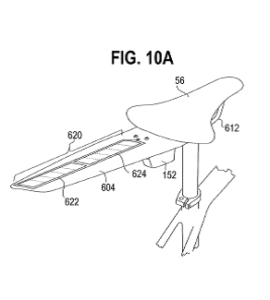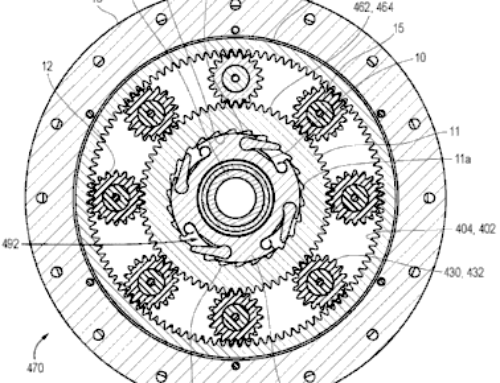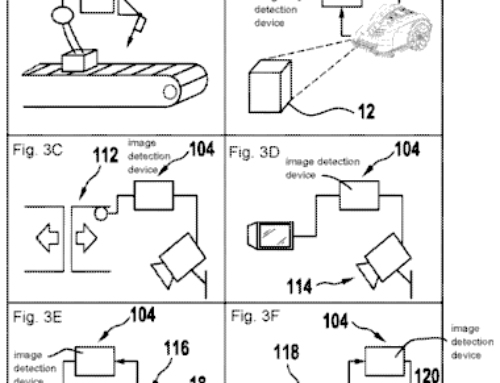
Solar energy for bicycle accessories patents have been issued to industry leader SRAM. Bicycles are increasingly dependent on batteries – and we’re not talking about ebikes with electric motor assist. Rather, many high-performance, human-powered-only bicycles, now use battery-powered derailleurs for shifting. Other components like dropper seatposts and suspension may have electronic integration as well. Meanwhile, bikes of all sorts need often have headlights and taillights that need power. And with almost everyone carrying a cellphone, there’s never a shortage of devices that need charging. With all that, the need to keep all the different batteries charged becomes a frequent chore.
One of the bicycle industry’s two big component companies, SRAM, has staked intellectual property claims to photovoltaic cells integrated into various components of the bicycle. SRAM has both an issued patent, as well as continuation (child) patent applications, for solar cells integrated into a front or rear fenders.
A continuous and renewable energy supply is a laudable goal. Batteries such as those for derailleurs have a very low draw, with SRAM’s rated for about 50 hours of between charges. So even a little solar power can go a long way. But practicality may be more complex.
In the realm of sustainable transportation, the fusion of technology and eco-conscious design is often hailed as the gateway to a greener future. SRAM’s recent patent for solar cells embedded within bicycle fenders presents itself as a promising stride towards this vision. However, beneath the surface, questions loom regarding the practicality and efficacy of such an innovation.
At first glance, the solar energy for bicycle accessories patents concept appears ingenious. Harnessing solar energy to power auxiliary devices like lights or GPS units on a bicycle seems like a logical step towards enhancing rider safety and convenience. But, as with any technological advancement, the devil lies in the details.
One of the primary concerns surrounding SRAM’s patent is its practicality in real-world scenarios. While the idea of solar cells integrated into bicycle fenders sounds innovative, the feasibility of generating sufficient energy from such a limited surface area raises skepticism. Bicycle fenders, by design, offer a relatively small area for solar panels, severely limiting the amount of energy that can be harvested, especially considering the intermittent exposure to sunlight during typical riding conditions.
Moreover, the efficacy of solar energy for bicycle accessories patents can be significantly compromised by environmental factors such as weather conditions and terrain. Cloudy days, shaded paths, or night-time rides render the solar cells virtually ineffective, leaving cyclists reliant on alternative power sources. In essence, the very situations where auxiliary devices like lights are most needed are the ones where solar energy production is least reliable.
Additionally, integrating solar cells into bicycle fenders introduces complexities in terms of design, durability, and cost. Fenders are subjected to various stresses during typical usage, including impacts, vibrations, and exposure to harsh weather conditions. Indeed, fenders are by design intended to keep water and crud off of the rider and bicycle. Embedding delicate solar cells within these components raises concerns about their longevity and susceptibility to damage, potentially leading to frequent maintenance or replacements, adding both inconvenience and cost for cyclists.
From a broader perspective, the question arises: is the integration of solar cells into bicycle fenders a genuine effort to promote sustainability, or merely a marketing ploy capitalizing on the growing trend of eco-friendly products? While the idea itself aligns with the ethos of sustainability, its practical implementation and impact on the environment remain ambiguous.
In conclusion, SRAM’s solar energy for bicycle accessories patents represents a commendable attempt to marry technology with eco-conscious design. However, its practicality, reliability, and overall effectiveness in real-world cycling scenarios is yet to be proven. Before heralding it as a revolutionary innovation, thorough scrutiny of its feasibility, environmental impact, and long-term sustainability is imperative. Only then can we discern whether it is a genuine step towards greener transportation or merely a fleeting gimmick in the pursuit of marketable novelty.


